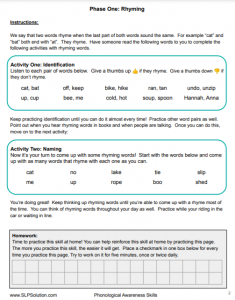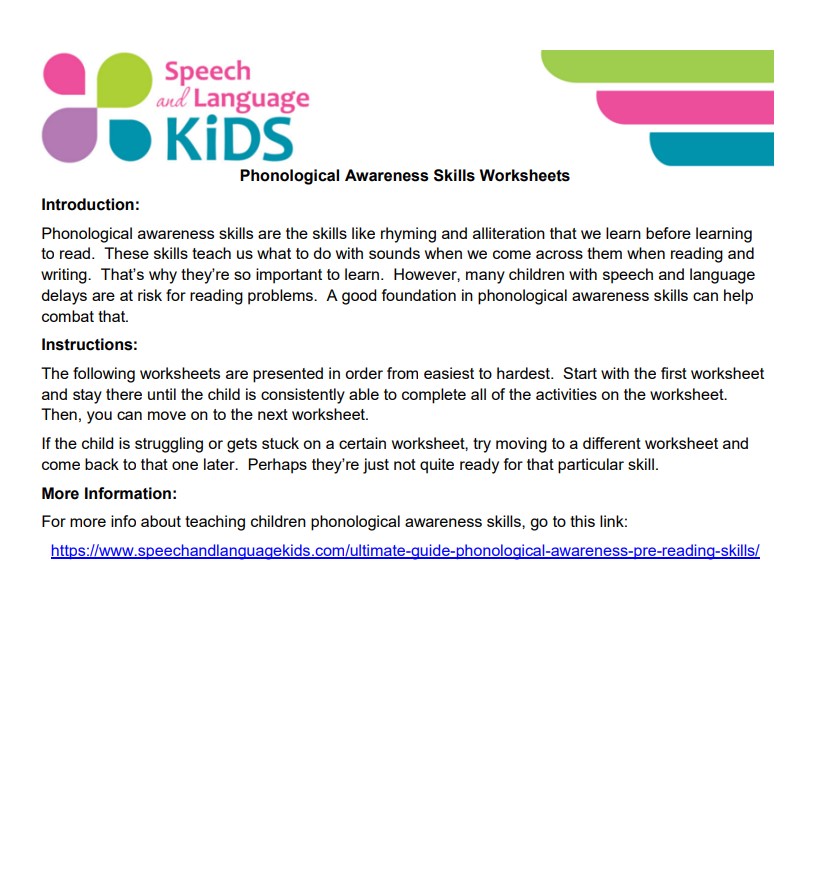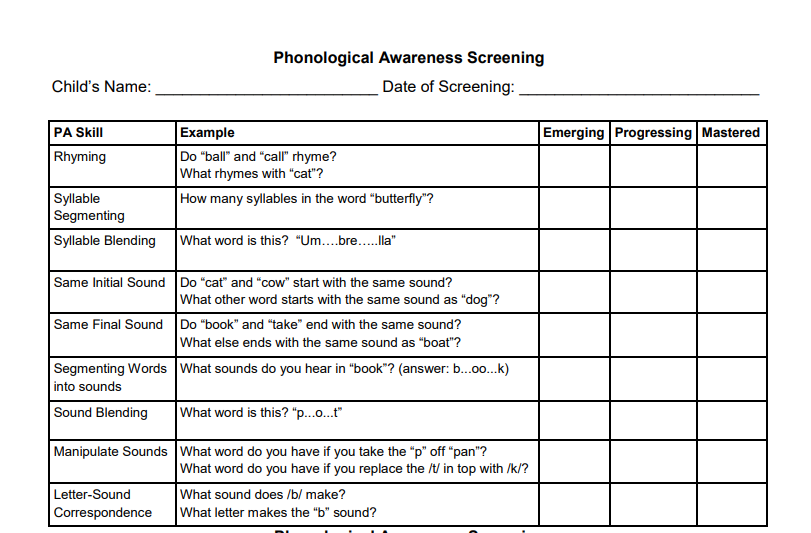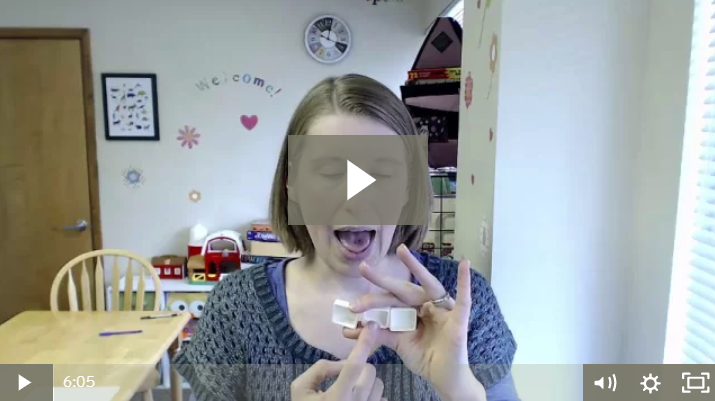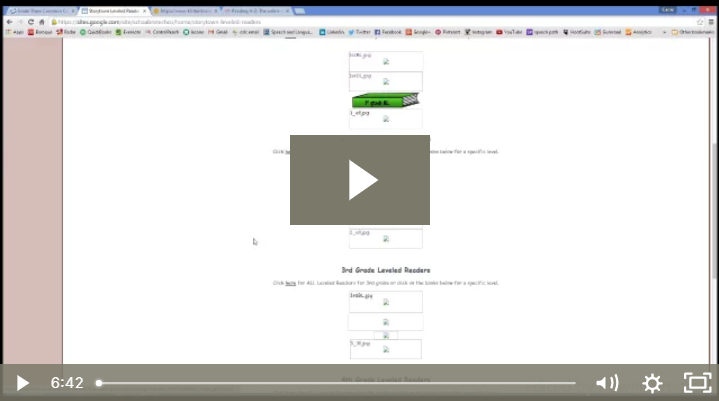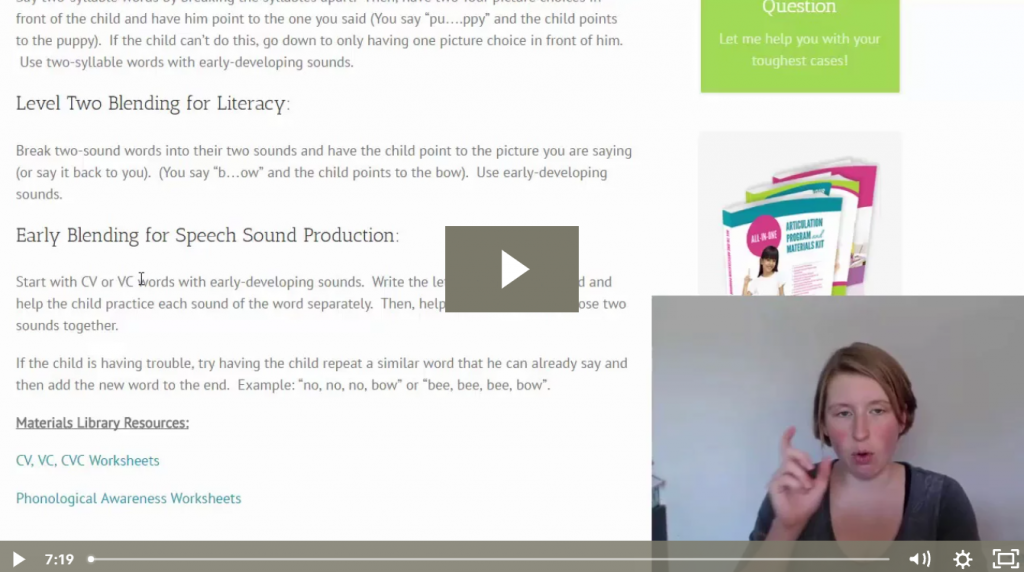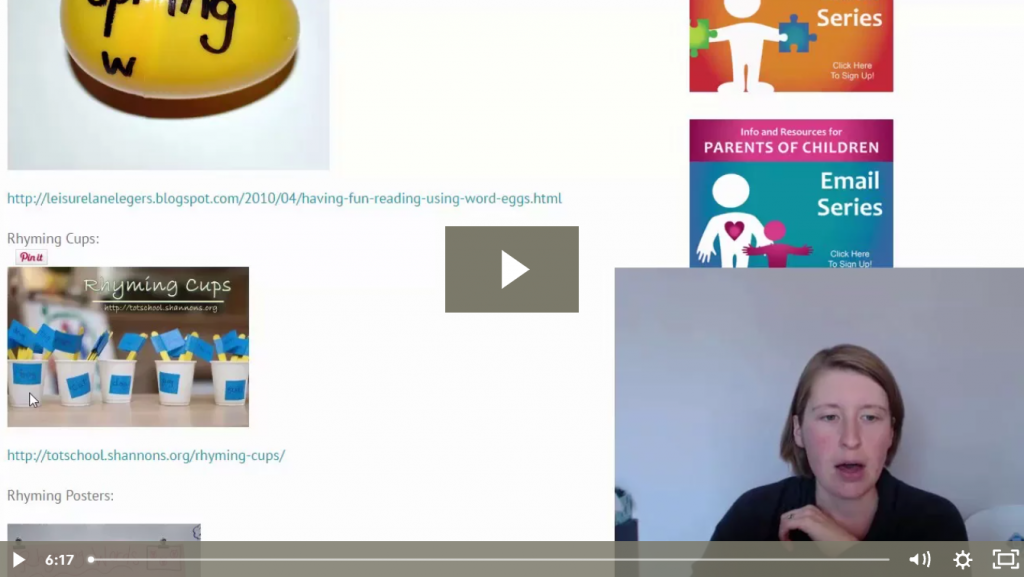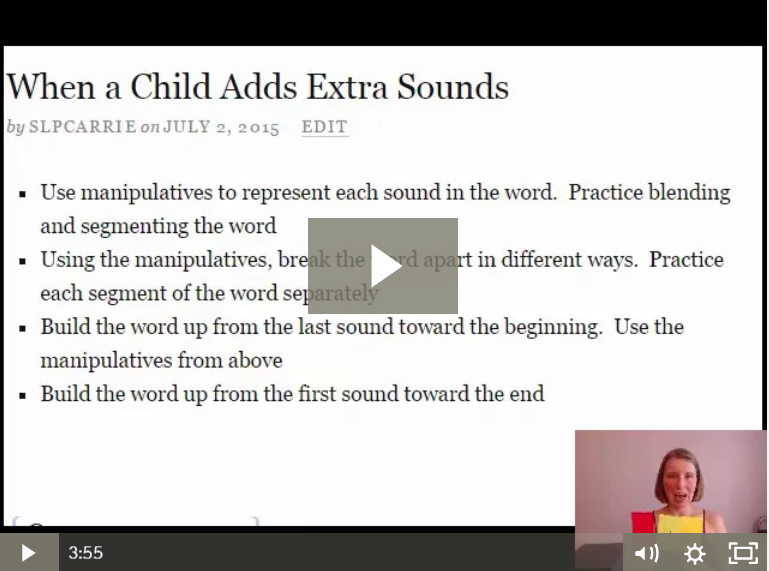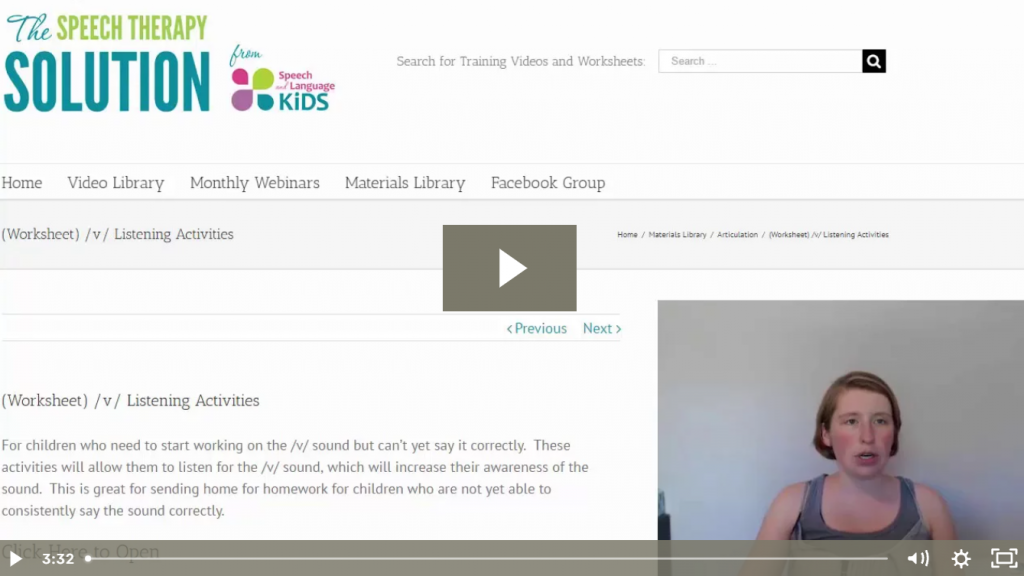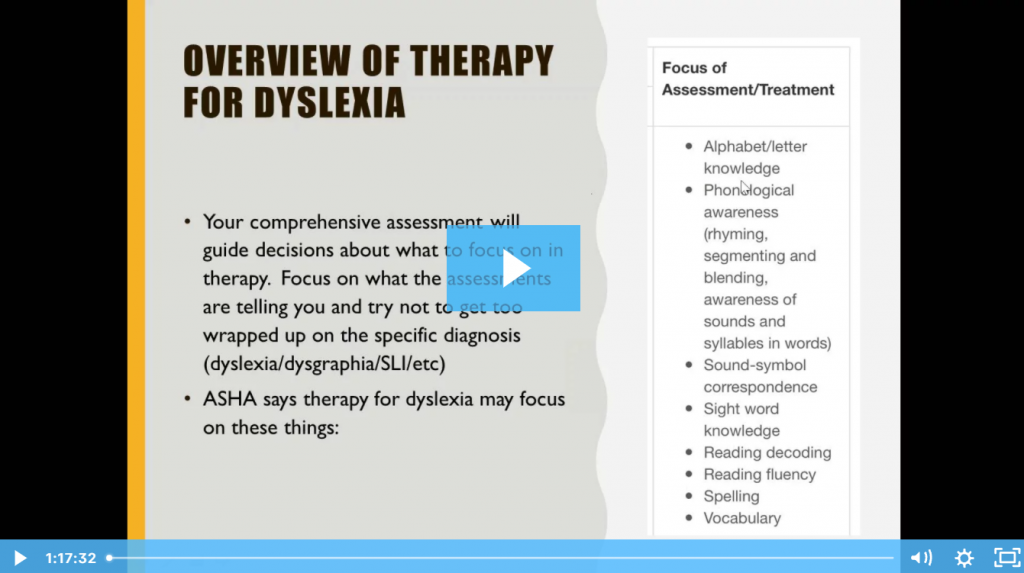Goal: Improve Phonological Awareness/Pre-Reading Skills
Phonological awareness refers to a set of skills that children typically develop in the preschool years as pre-reading skills. These include skills where the child begins to understand how words are made up of individual sounds and those sounds can be manipulated and changed to create different words. During this phase, children become aware of the phonology of our language, meaning how different letters and sounds create the words that we speak, read, and write.
Phonological Awareness skills include rhyming, alliteration, segmenting words into smaller units, combining separate sounds into words, and understanding that words are made up of sounds that can be represented by written letters. Let’s break down how to teach these!
Sample Goal:
Download the No-Prep Therapy Kit:
We have a start-to-finish therapy kit that will give you everything you need to practice this skill in therapy and send home homework. Click the packet below to open it. Then, print it out and place it in the child’s notebook or binder.
Therapy Phases:
***NOTE: The phases for this don’t necessarily have to go in this order. This is a rough developmental order by which many children acquire these skills. However, if you have a client who is struggling with one, try a different skill and come back to the harder one.
- Rhyming When provided with a word, Client will name a word that rhymes with 80% accuracy.
- Ability to segment words into syllables Client will correctly segment a word into individual syllables by clapping out each syllable with 80% accuracy.
- Syllable Blending After hearing the syllables of a word separated out (“um…bre…lla”), Client will blend the syllables back together to make the full word with 80% accuracy.
- Alliteration: When provided with a word, Client will name a word that starts with the same beginning sound with 80% accuracy.
- Ability to identify words with the same final sound When provided with a word, Client will name a word that ends with the same final sound with 80% accuracy.
- Ability to segment words into individual sounds: consonant-vowel (CV), vowel-consonant (VC), and consonant-vowel-consonant (CVC) Client will correctly segment CV, VC, and CVC words into individual sounds by saying each sound in isolation with 80% accuracy.
- Ability to segment words into individual sounds: CCVC, CVCC, CCVCC Client will correctly segment CCVC, CVCC, and CCVCC words into individual sounds by saying each sound in isolation with 80% accuracy.
- Sound Blending: After hearing the individual sounds of a word separated out (“d..o…g”), Client will blend the sounds back together to produce the full word with 80% accuracy.
- Ability to manipulate sounds in words Client will follow directions to manipulate one sound in a word to create a new word (“cough” without the /k/ makes “off”) with 80% accuracy.
- Letter-sound correspondences: Client will produce the sound that a particular letter makes with 80% accuracy.
Supplemental Materials
Here are some other resources that may help you when working on this skill:
Phonological Awareness Skills Worksheet
Phonological awareness skills are the skills like rhyming and alliteration that we learn before learning to read. These skills teach us what to do with sounds when we come across them when reading and writing.
Phonological Awareness Screening Tool
This simple checklist will allow you to screen phonological awareness skills so you remember which skills need to be addressed in therapy.
View all of our resources on literacy here

